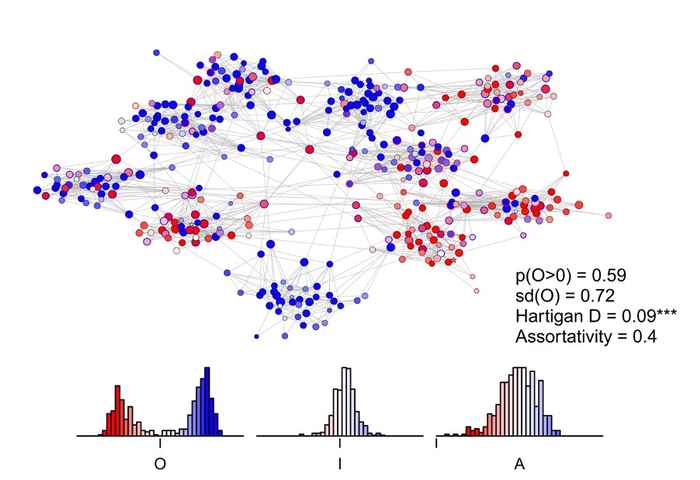1.4 The polarization within and across individuals: the hierarchical Ising opinion model
van der Maas, H. L., Dalege, J., & Waldorp, L. (2020)
Author Han van der Maas on the article:
If there is one social phenomenon that caught the attention of computer scientists and physicists, it is the spread of cultural artefacts, such as language, habits and opinions in populations. So called social dynamics have been studied intensively in disciplines such as psychology, the social sciences, computer science and statistical physics. An excellent overview is provided by Castellano and colleagues (Rev. Mod. Phys., 81, 591–646, 2009). Famous are the computer simulations of Axelrod’s model in which global convergence to a single culture as well as the persistence of diversity occur.
In our paper we propose a new explanation of polarization in opinion dynamic models by introducing a richer model of the individual. Usually, the model of the individual is kept simple, often binary, one adopts either opinion A or B. The interaction between the within individual dynamics of opinion formation and across person opinion dynamics is rarely studied in unison. And this is what we do in our paper.
In the last ten years we developed a mathematical model of opinion formation at the individual level using Ising networks of attitude elements (for an overview see Dalege, J., et al. Psychol. Inq., 29, 175–193, 2019). Depending on the involvement into an issue, these networks behave either discretely or continuously. The Ising model of attitudes explains a range of phenomena at the individual level, such as the mere thought effect and resistance to persuasion.
The mean behaviour of these individual networks can be described by the famous cusp singularity. In our agent-based model of opinion formation we model the individual nodes as cusps and study interactivity between cusps, which makes the model tractable. Because individuals display hysteresis in their opinion behaviour when their involvement is high, new polarization phenomena at the social level may occur. With computer simulations we explore two such phenomena, polarization and the persuasion paradox. We also propose a new intervention for escaping polarization in bounded confidence models of opinion dynamics. A demonstration of the model (about polarization in the black Pete debate) can be found at: https://lukovdm.github.io/hiom-sim/
This paper is of interest for the study of polarization of opinions, an important and increasing societal problem. As it is a new approach in agent-based modelling of social phenomena we expect that most researchers in the field of agent-based models might be interested. Some researchers might be interested in a new application of the Ising model. We expect that the paper is also relevant for the study of hierarchical networks, as we proposed a model of (individual) networks within (social) networks. This paper is just a first attempt to get a grip on this new hierarchical network model, and we foresee other applications; we now work on addiction, and further analytical work.

van der Maas, H. L., Dalege, J., & Waldorp, L. (2020). The polarization within and across individuals: the hierarchical Ising opinion model. Journal of Complex Networks, 8(2), cnaa010.